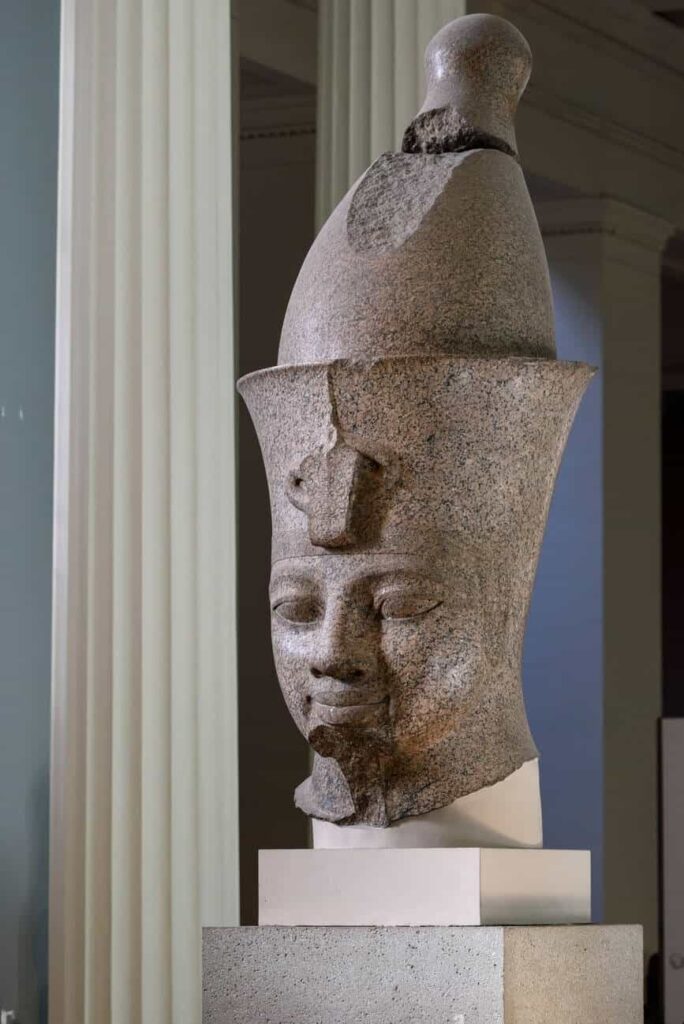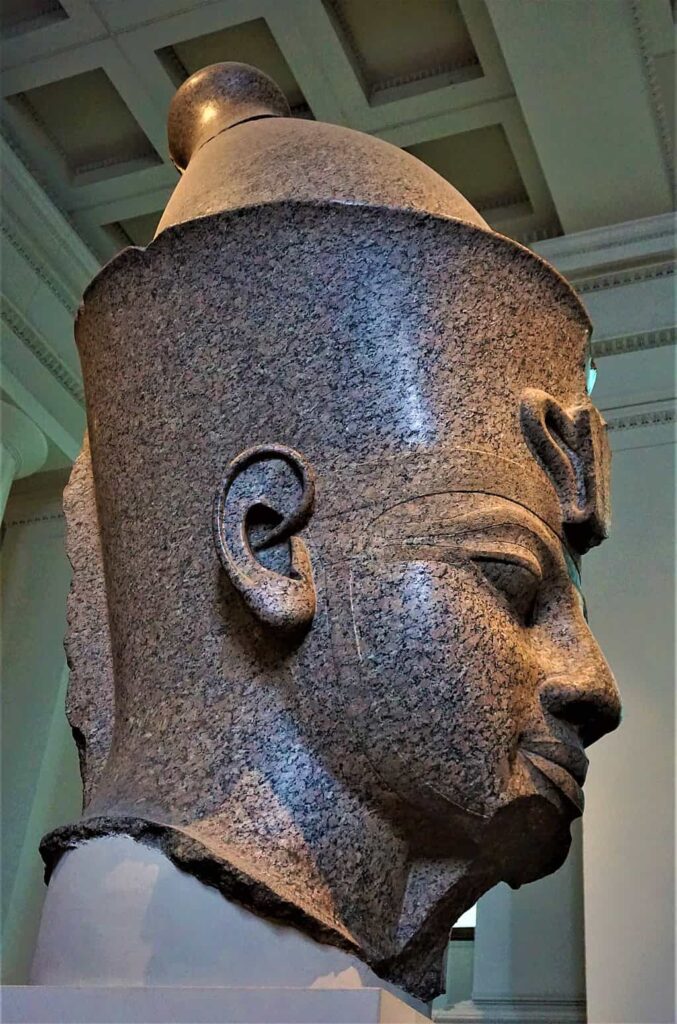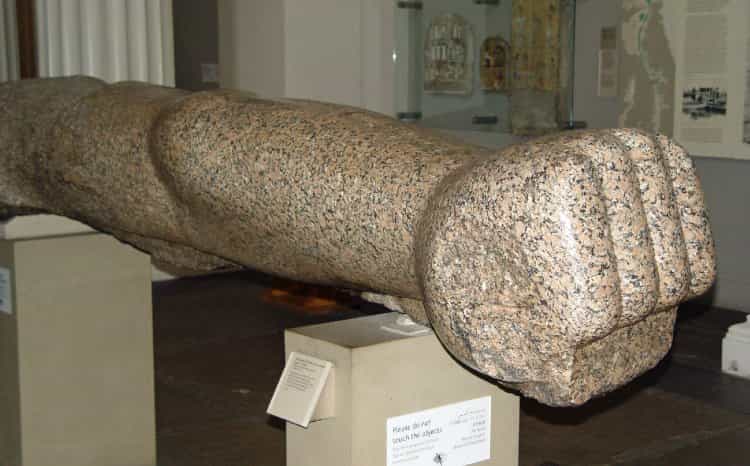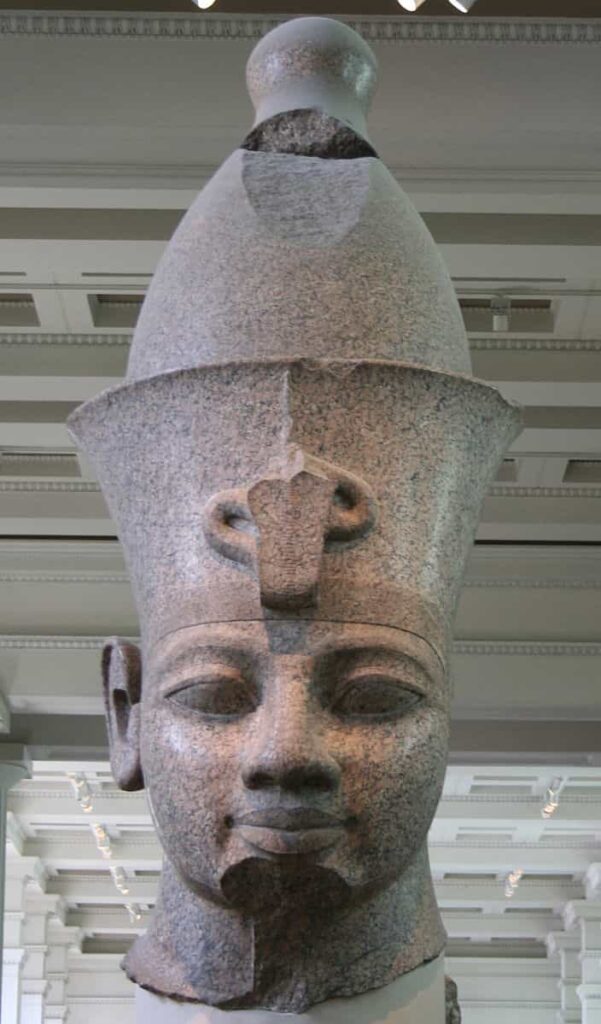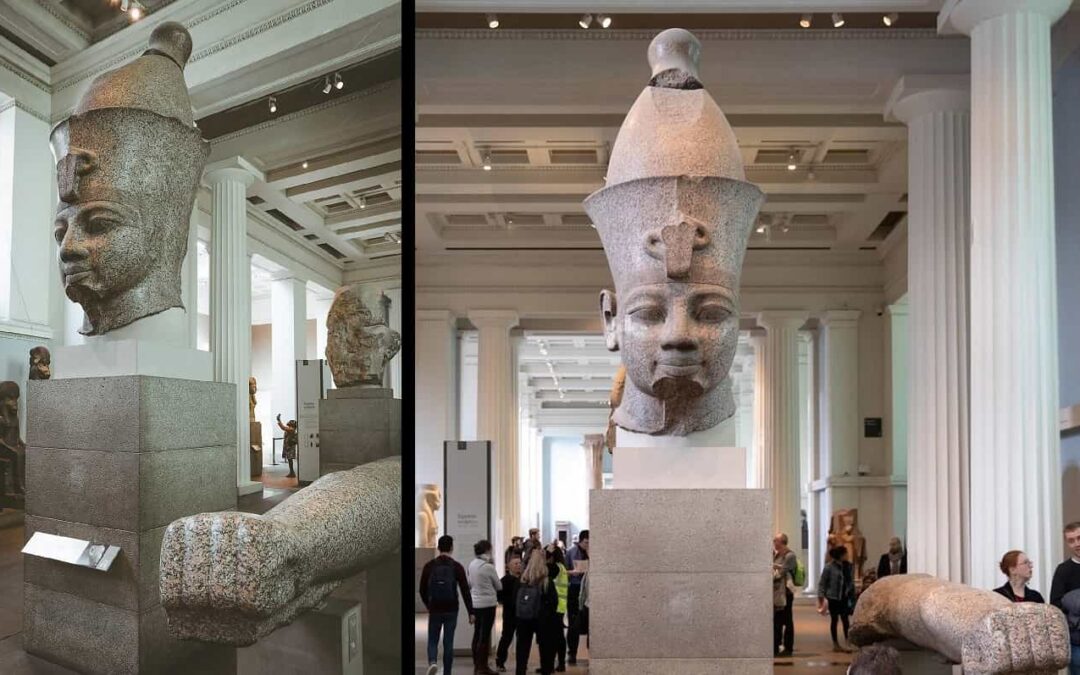The Colossal Head of Amenhotep III, also known as the colossal red granite statue of Amenhotep III, dates back to 1350 BC and is a part of the Eighteenth Dynasty of ancient Egypt (1550 BC to 1295 BC).
It was discovered in 1835 by British consul Henry Salt, in front of the temple of Khonsu in the grounds of the temple of Mut in Karnak, near Luxor, Egypt.
The temple of Mut, considered the mother goddess, was built by Pharaoh Amenhotep III, but was later added to by Ptolemy II Philadelphus, Ptolemy III Euergetes, Taharqo, Nectanebo II, and Ramses II who made modifications to the decoration.
Who was Amenhotep III?
Amenhotep III, also known as Amenhotep the Magnificent, Amenhotep the Great, or Memnon, was the ninth pharaoh of the Eighteenth Dynasty and ruled ancient Egypt from approximately 1390 BC to 1353 BC. His reign is known for being a period of prosperity and greatness in the arts.
Description
The statue stands at 9 feet 5 inches tall and is made of red granite. Although the inscription on the torso has been erased, the details of the face, such as the heavy lines around the eyes, showcase the style of art prevalent during Amenhotep III’s reign.
There are also indications of modification, particularly during the reign of Ramses II, such as worn down lines on the face and adjusted lips to create the illusion of a smaller mouth.
The head is crowned with the double crown, made up of the white crown of Upper Egypt and the red crown of Lower Egypt. It was originally part of a larger sculpture, but only the head and left arm made of red granite have survived and are now on display at the British Museum in London, UK. The arm is 328 cm long, 85 cm wide, and 55 cm high and has a closed fist.
